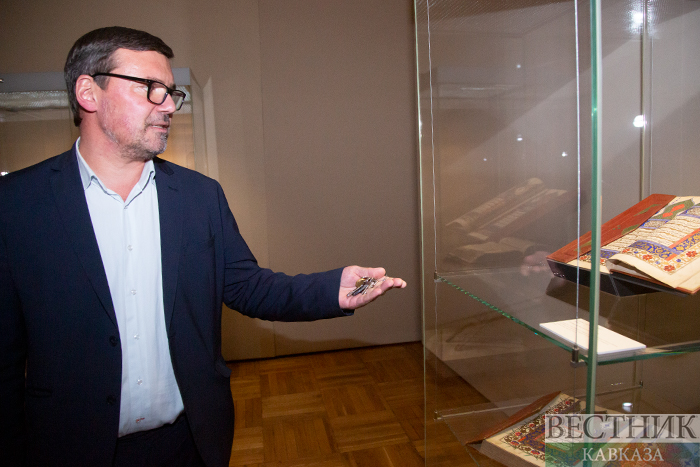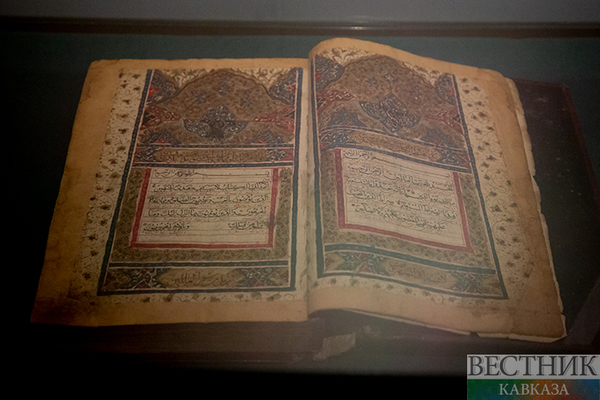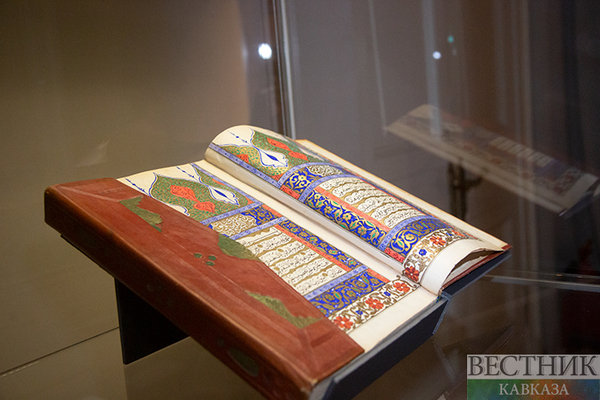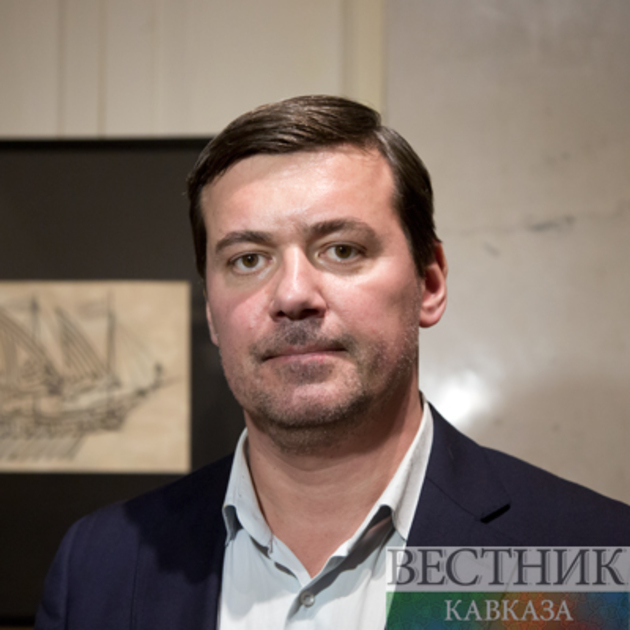Today, the State Museum of Oriental Art has opened an exhibition "Moscow Qurans", timed to coincide with the 1100th anniversary of the adoption of Islam by the Volga Bulgaria. The exposition tells about the origin of the Qur'anic text, its meaning, the history and origin of the Qur'an manuscripts, as well as their artistic features, handwriting and traditions in which they are made.
The exhibition presents 40 unique copies of the Holy Book of Islam dated from the 10th-19th centuries from the collections of the State Museum of Oriental Art, the Mardjani Foundation, the Russian State Library (RSL), the Institute of Oriental Studies of the Russian Academy of Sciences, the MGIMO Scientific Library of the Ministry of Foreign Affairs of the Russian Federation, the Archive of the Russian Academy of Sciences, the Scientific Library of Moscow State University. M.V. Lomonosov, All-Russia State Library for Foreign Literature. They tell about the development of the art of copying the Quran over almost a thousand years in the space from the Maghreb to Kashmir, from the Volga region to Iran, from India to Dagestan, Ilya Zaytsev, curator of the exhibition, told Vestnik Kavkaza.
- How did you come up with the idea of "Moscow Qurans"?
- We have been working on the idea of the exhibition for a long time. The main task was to collect unique manuscripts of the Holy Book of Islam, which are stored in Moscow collections - museums, libraries, archives. The task itself was quite difficult, but we coped with it and chose the most interesting examples, which would illustrate the history of the creation of Qur'anic manuscripts for more than a thousand years, that is, from the 9th to the 19th centuries. There are 40 manuscripts of the Holy book from the Maghreb to Kashmir, from the Volga region to Syria, from Türkiye to Iran. This is a huge part of the Islamic world for almost a thousand years of its history.

- Where do the presented books come from?
- We divided the entire exposition into several geographical zones and semantic parts. There is a hall where the most ancient traditions are presented, it shows us the early tradition of rewriting the text of the Quran, which mainly contains Kufic fragments made in the XIV-XV centuries, in a very beautiful handwriting of Muhaqqaq. Muhaqqaq, naskh, nastaliq are different traditions of the text rewriting, Arabic calligraphy handwriting. Another hall is dedicated to Kashmir and Iranian manuscripts, which are close to it in a decorative sense. There is also Central Asia.
- Tell us more about the Dagestan manuscripts...
- In one hall we presented four manuscripts from Dagestan of the XIX century. It is interesting that two of them were rewritten by one person, his name was Shamkhali bin Isa Al-Karakhi, that is, he came from the village of Karakhi from the Karakh society in the modern Charodinsky district of Dagestan. With a difference of a year, he rewrote two manuscripts of the Quran, which later ended up in the collection of a Tatar philanthropist and bibliophile, whose name was Mohammed Khasan Timerbulatovich Akchulin. Unfortunately, we do not know for surehe, whether these were custom-made manuscripts or not. It is very important that this is a part of his library that was missing.
It is curious how the same person, with very little time difference, rewrote the sacred text. It would seem that he already had some ready-made techniques. But the manuscripts are absolutely unique: each of them has its own unique face and decorative design. He arranged the text in different ways, made decorations for this text in different ways, rewrote it in different ways. We see the individual work of each person on a text familiar to him from childhood.
There are two more manuscripts of the Quran from Dagestan. A wonderful copy, which the Mardjani Foundation provided to us for the exhibition. And one more manuscript from the RSL, also rewritten by a native of Dagestan in 1887. It is interesting for innovations in the decoration of the Qur'anic text. There you can see the influence of European art, the features of Art Nouveau style. It can be seen that other dyes were used. That is, this tradition has always lived, it has constantly developed.
I would like to draw your attention to one of the manuscripts, which comes from the Juma mosque in the village of Kubachi, but it was not rewritten in Kubachi, but, apparently, in Iraq or somewhere on Iraqi land at the turn of the XIV-XV centuries. This is a manuscript from the Scientific Library of Moscow State University. It "lived" in the Caucasus for a long time and it was repeatedly restored. But we do not know how it was brought to Kubachi. Whether it was the consequences of the hajj, which was performed by one of the inhabitants of this village or, perhaps, brought by the Kubachi imam, but this is an interesting example of connections between the centers of the Islamic world and such relatively remote regions as Dagestan since the 14th-15th centuries.
- Are there copies from Azerbaijan?
- There is one manuscript, which, apparently, comes from Azerbaijan. It is not signed, so we think, it can be probably dated to the end of the 18th century. But, according to the methods of decorative design, the manuscriprt clearly tells us about the Northern Iranian or Azerbaijani origin.
- What were the prerequisites for showing all this in Moscow?
- The main information occasion was the 1100th anniversary of the adoption of Islam by the Volga Bulgaria. This is a significant date in the history of our country. We tried to somehow illustrate and mark it in a museum way: to present those wonderful treasures, Quranic manuscripts, which are in Moscow collections.








